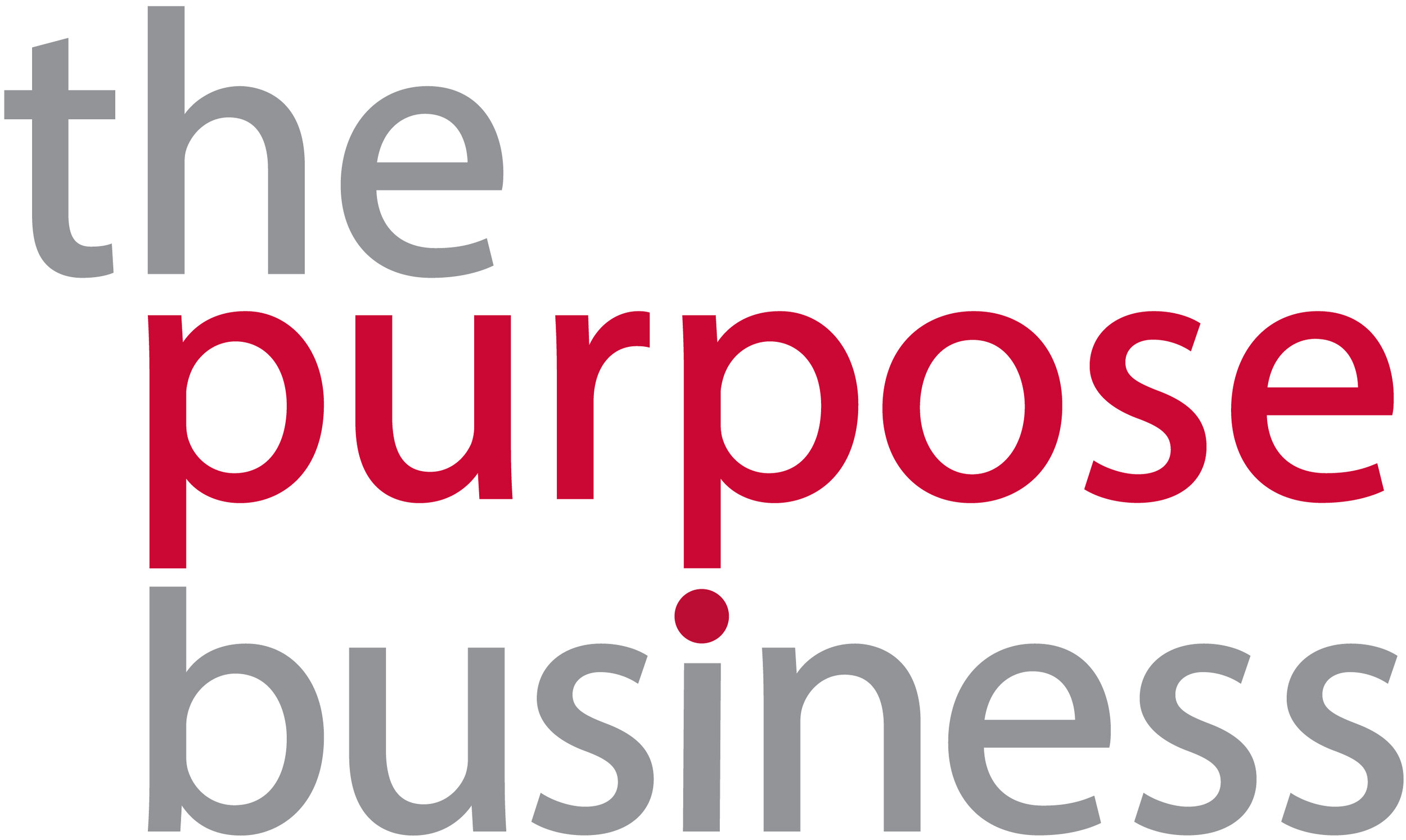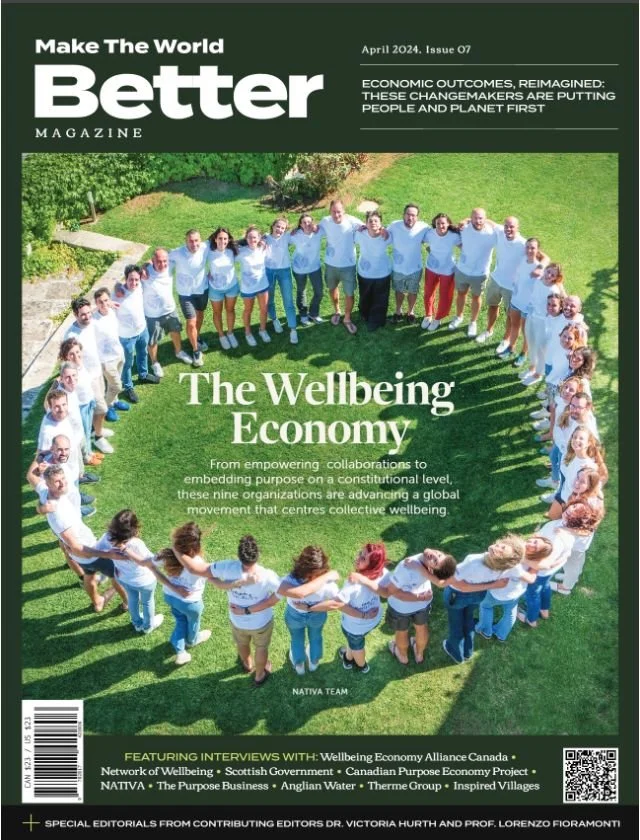Trend watch: The right ingredients for a sustainable business
TPB’s Founder & Director, Pat Dwyer, looks at the ingredients that mix best together to scale sustainability in your business.
The Purpose Business turns four in a few days and there’s many reasons to celebrate (including you, dear reader, we thank you for supporting us all this time!). As we grow, we are scaling up our work, and we thought it’d be good to share some of the trends that we think Asia needs to scale up in order to succeed in running responsible businesses.
Because it’s our birthday, I thought I would do things differently and take inspiration from what makes a good birthday cake – and use that as a recipe to help you scale up these four trends.
So what makes a good cake? There’s many ways to make it fancy, but a good birthday cake in my opinion has to have four (yay!) key ingredients: a classic sponge – this is the basic foundation and there is simply no cake if there is no sponge; moist filling – complements the sponge and breaks up the dryness binding the whole cake together as a single source of joy; moreish icing – which is, let’s face it – the best bit and lets the cake stand out from the rest; and of course, candles – which mark the reason for the celebration (or why you are having cake in the first place).
For each of the four trends below, I will give you what I think are the components that make it the perfect birthday cake – and hopefully, you can sink your fork into a slice of it very soon.
Trend 1: Leaders increasingly talking about ESG as risk
2019 was ushered in with grey clouds of trade wars, global economic growth threats, populism, overall political instability, among others. Business leaders have shifted to defense mode, and if there is a silver lining, it is the heightened awareness around risks and challenges beyond the short term. I personally am encouraged by this, as Larry Fink is no longer speaking to a converted few. His purpose and profit letter to CEOs reiterating the need for a shift to long-term thinking is going to have to be the norm, if business leaders are to think about ease or the cost of doing business. Your recipe for a having your (ESG as risk) cake and eating it too:
The sponge: Have you ever wondered why ESG materiality assessments are done separately from annual business risk review processes? It doesn’t have to be! Enterprise risk management may be familiar to some, others may use Pestle or Porter’s Five Forces to review risks to business, whether financial or non-financial. Find the company’s risk management framework and aim to include / apply environmental and social considerations within it. It will save extra costs and bring the conversation closer to the heart of business.
The filling: ESG as risk should be part of business strategy that runs consistently from the highest levels of a company i.e. the board of directors and executive leadership who will have oversight and accountability down to the lowest levels of staff whose day to day tasks should activate commitments such as reducing waste, seeking eco-friendly suppliers or hiring locally.
The icing: How could the ESG as risk lens make you stand out from the rest? Think differently. Make ESG thinking a part of mainstream risk management .One of the earliest adaptors of sustainability in Asia, Ayala Corporation, offers an answer; “We need to start looking at Risk Management & Sustainability as interconnected systems that are part and parcel of our overall strategy, decision-making, and investment process.”, says President and COO, Fernando Zobel de Ayala at the summit that integrates the two processes.
The candles: Talk about it simply as good business practice, and that it is part of managing the cost of doing business.
Trend 2: Making sustainability everyone’s agenda
Some Chief Sustainability Officers dream of being made redundant or moving on to another role- because it means their company has made sustainability everyone’s business. What’s the secret to getting there?
The sponge: A clear business case for why sustainability is important is the starting point. No one engages in a vague agenda. Department heads need to understand the value it brings to their team in order for them to ask for their people’s support. There is nothing wrong with employees asking what’s in it for them, especially if it entails extra work or a change in the way things are done.
The filling: Creating buy-in and having teams take ownership takes time. It has to come with an empowering tone from the top, availability of resources (extra training, for example) and a consistent monitoring process. Swire Properties launched their Sustainable Development strategy dubbed “SD 2030 Strategy” and activated an entire governance structure through taskforces. The CEO says that in the first year, “the focus has been on ‘getting things done’…. This strategy is aimed at ensuring that SD is integrated into every facet of our business, so it is vital that everyone not only understands what our strategy is about, but also feels empowered to contribute to what we are trying to achieve… We have incorporated SD focus areas directly into our annual budget-planning processes and, most importantly, we are putting SD key performance indicators into action…”
The icing: They say you can’t create a culture overnight. It may take a long time, but it’s never too late to start embedding a culture of responsible business thinking. If HR, Finance, Legal, the on-site plant, the outsourced designer or the annual auditor all understood that a company was committed to zero harm or resource efficiency, then the policies, guidelines, actions are all going to be governed accordingly.
The candles: Celebrate everyone’s successes! Encourage new ways of working as cross-functional or hybrid teams. Recognise new ideas and crowd source challenges outside a single department. You will find that this is an invigorating (and low cost) way of empowering every single member of your workforce.
Trend 3: Sustainability as a medium for change
The truth is that sustainability is uncomfortable. Done right, it will test everything from a company’s appetite for change, to how solid its mission is, down to people’s loyalties. The agenda requires a shift in our understanding of how value is created , measured and these days, even how it is reported. It questions short-term thinking, forcing the hand on things like long-term thinking, creating social value, and managing stakeholder interests. Sustainability is probably one of the hardest cakes to make, bake and serve so let’s make sure we get the right amounts of:
The sponge: Aim for a clear articulation of why sustainability is important and what ambition levels look like. Leadership is not for everyone, and whether the driver is resource efficiency or new business development, it has to be made clear as it will set the tone for the pace of progress. It inform priorities, resources, pilot projects, etc.
The filling: We spoke about governance and ownership above but no change will happen unless it is seriously taken at the top. Sinyi in Taiwan has instituted a new governance structure to demonstrate that sustainability is now top priority. In 2017, they set up a Total Ethical Management (TEM) Committee that coordinates their CSR and sustainable development direction and sets relevant goals. They also have oversight of stakeholder engagement feedback and hold quarterly ESG performance reviews with the executives. In turn, everyone in middle management and below have equivalent goals and KPIs that support the wider strategy.
The icing: Change is even more authentic when external stakeholders can attest to it. If suppliers can see the difference in the way they are engaged (conversations extend beyond price), or tenants in a mall can participate in measurable efforts to manage food waste or interact with the local community on livelihood programmes. It is about successfully delivering your product or service and showing the tenfold value it comes with. Energy company AES Corporation’s operations in Vietnam say “we demonstrate our continuous support in contributing to Vietnam’s sustainable development by delivering safe, reliable, and sustainable energy the AES way.” They recognise that they have a critical role to play to supporting the growth of the economy by changing the way it sources and uses energy.
The candles: A cause for celebration comes when companies are able to innovate in the face of ESG pressures. Nike Grind, has found a new breed of designers to repurpose footwear and manufacturing waste which can lead to new business lines while companies like
Greenhope and Higi Energy bring solutions to age-old problems of packaging and cleaner energy respectively.
Trend 4: Purpose as part of responsible investment strategy
In 2016, the Global Sustainable Investment Alliance, released a report that said assets devoted to ESG investing are no more than 1 percent of total managed assets in Asia ex-Japan compared to the US (21.6 percent), Australia/New Zealand (50.6 percent), and Europe (52.6 percent). Yet in the past few years we can see increased interest in overall sustainable finance in the region.
Today, in many parts of Asia, new wealth is being generated and invested. There is a huge opportunity in developing responsible investment strategies. For instance, millennials are twice as likely to invest in companies or funds that target social or environmental outcomes. In addition, four in five (80 percent) women are observed to be keen investors in ESG as opposed to 60 percent of men, and the trend continues with women’s rising financial independence.
The sponge: As an investor, ask yourself why you invest in certain companies? As a family office with a specific focus or cause, what do you wish for your investments to achieve? Beyond a decent financial return, what else is important to you? Articulate this sense of purpose -whether they are about scaling up businesses that are multi-generational or those that promote specific growth of certain industries in the developing world. A clear articulation spells how the investment strategies are defined.
The filling: One asset manager states this in their investment strategy: “[Given] the nascent regulatory environment in emerging markets, and the long term nature of our investment horizon, the assessment of Environmental, Social and Governance (“ESG”) issues is particularly important to us.” They ensure that this is consistently done by carrying out their own sustainability assessments, commissioning their own research and tracking their investments’ progress.
The icing: For those who don’t exclusively engage in sustainable finance, special funds can be set up such as ESG specific funds, special products in impact investing, etc. Depending on the (investing) client’s or asset manager’s focus or priorities, these products or funds contain securities who perform well in selected environmental or social issues, have good sustainability scores by respected indices, or exclude high ESG risk operations. (You can read more here.)
The candles: For companies who value engagement with institutional investors or are simply receiving more questions on ESG practice from these investors, it is useful to sink resources in thoroughly (and properly) participating in sustainability indices and surveys. They are the basis for most ratings and scores that investors look at, along with a sustainability report that you would have prepared. For asset managers, make your purpose and responsible investment strategy known – embed them in your engagement conversations and challenge the companies you invest in to disclose more.
As Elon Musk said, “If you’re trying to create a company, it’s like baking a cake. You have to have all the ingredients in the right proportion.”




